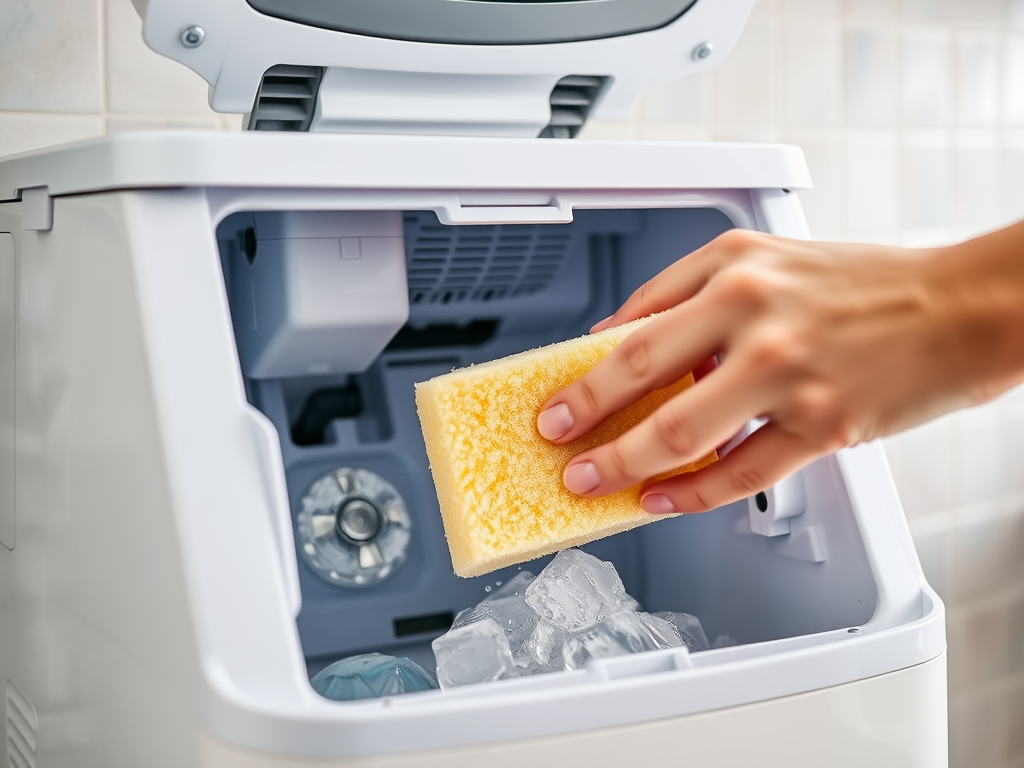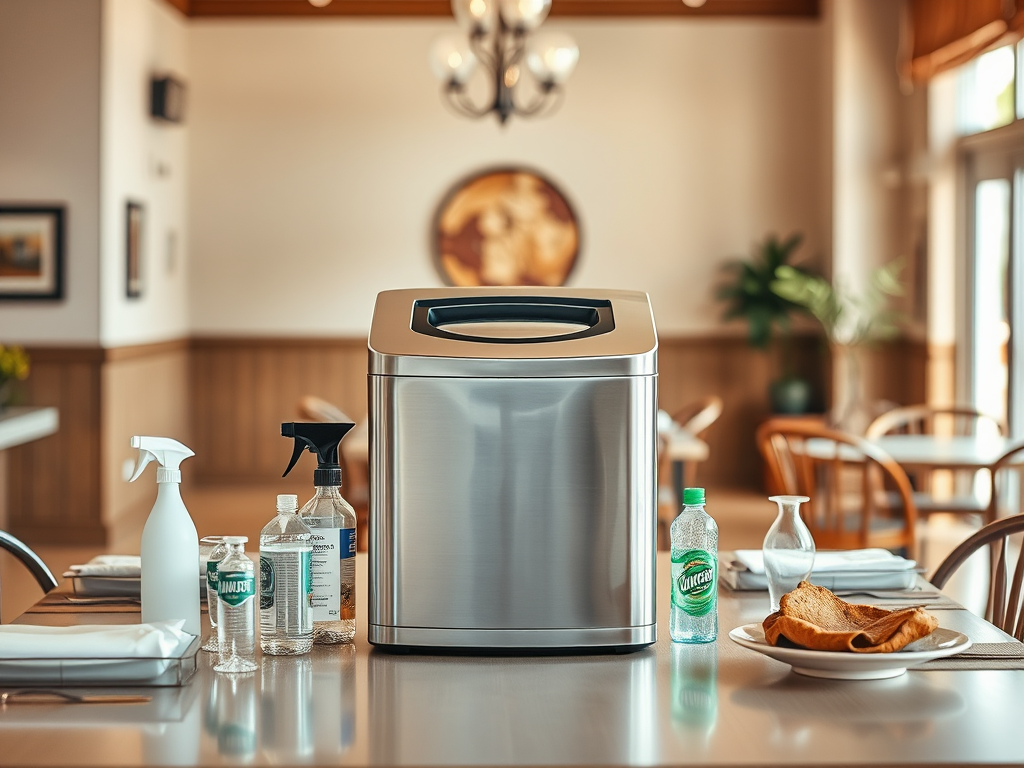We all love those warm sunny days when we can enjoy refreshing drinks with ice cubes clinking in them. But if you rely on a portable ice maker for that convenience, maintaining its performance should be a priority. Over time, mineral deposits and bacteria can build up inside the machine, compromising both the quality of the ice and the lifespan of your device. Understanding how to deep clean your portable ice maker not only ensures you get clear, fresh ice but also promotes overall hygiene for you and your family. In this comprehensive guide, we will explore the necessary steps to effectively deep clean your ice maker, providing you with the knowledge to uphold its optimal functionality.
First things first, let’s delve into how exactly your portable ice maker operates. Knowing this will shed light on the areas that require attention during the cleaning process. A portable ice maker generally consists of several key components, such as the water reservoir, ice-making unit, and the ice bin. Each of these parts plays a crucial role in the machine’s ability to deliver ice quickly and efficiently. Understanding their purpose will not only help you clean them effectively but also condition you to spot any potential issues sooner.
Understanding Your Portable Ice Maker

A portable ice maker typically works by drawing water from a reservoir, freezing it on a metal plate, and then releasing the formed ice into a storage bin. The simplicity of this system makes it incredibly convenient, but it also means that cleanliness is paramount to its efficient functioning. If you let mineral deposits or bacteria accumulate, these components can become clogged or damaged, leading to poor ice quality.
- Water Reservoir
- Ice-Making Unit
- Ice Bin
- Drain Plug
These components are essential to the machine’s performance. If they remain dirty, your ice could taste odd, and your device may experience mechanical issues that require costly repairs. Thus, understanding how they work is the first step toward maintaining overall cleanliness.
Why Deep Cleaning is Necessary

It’s crucial to grasp why you need to deep clean your ice maker regularly. Left unattended, mineral deposits from hard water can accumulate inside the water reservoir and on the cooling components. If the ice maker is not cleaned, the quality of the ice produced will deteriorate. Additionally, bacteria can thrive in stagnant water, leading to potential health risks.
Moreover, a consistent cleaning routine can extend the lifespan of the components, ensuring you’re not facing unexpected breakdowns and expenses. By committing to deep clean your appliance every few months, you can preserve the quality of the ice and maintain the efficiency of the machine.
| Component | Cleaning Frequency | Recommended Cleaning Method |
|---|---|---|
| Water Reservoir | Every 1-2 months | Soapy water or vinegar |
| Ice Bin | Every 1-2 months | Soapy water or vinegar |
| Exterior Surface | As needed | Dish soap and water |
| Cooling Components | Every 3-6 months | Vinegar solution |
Preparing for the Deep Clean
Before you dive into the cleaning process, it’s essential to prepare adequately. Not only do you need to gather your cleaning supplies, but you should also make sure you’re taking the right safety precautions. Start by unplugging the unit to ensure that no power is running through it while you work.
Gather the following cleaning tools and solutions:
- White vinegar
- Dish soap
- Sponge or soft cloth
- Water
- Bucket for rinsing
- Soft brush for hard-to-reach areas
Once you have everything ready, you’ll want to give yourself enough time to complete the cleaning process thoroughly. Rushing through could lead to overlooked areas and ineffective cleaning.
Step-by-Step Cleaning Instructions
Disassembling the Ice Maker
Start your cleaning by disassembling the ice maker. Ensure that you have consulted your user manual for specific dissassembly instructions that relate to your model. Each portable ice maker may have different components, but most will have a removable water reservoir and ice bin.
Carefully detach these parts and set them aside. Make certain to keep any screws or small parts together to avoid losing them during the cleaning process. Some components, like the drain plug, may also need cleaning, so don’t forget to take them out as well.
Cleaning the Internal Components
The internal components are critical for maintaining ice quality and hygiene. For the water reservoir and ice bin, use a solution of warm soapy water or vinegar to scrub away any residue. Make sure you avoid abrasive materials that could scratch the surfaces.
For the cooling components, mix a solution of equal parts vinegar and water. Use a soft brush or cloth to scrub gently, paying attention to any areas where minerals may have built up. Rinse all components thoroughly with clean water to remove any cleaning solutions before reassembling the ice maker.
Cleaning the Exterior of the Ice Maker
While the inside may be the focus, don’t neglect the exterior of your ice maker. Using a mild dish soap mixed with warm water, wipe down the outer surfaces regularly to keep them looking good and functioning well. Choose a soft, damp cloth for effective cleaning.
Furthermore, avoid using harsh chemicals, as they may damage the finish of your appliance. Regularly cleaning the exterior will not only enhance its appearance but also prevent grime from building up.
Maintenance Tips for Longevity
After your deep clean, it’s prudent to adopt some maintenance measures to ensure your ice maker stays in top shape for years. Regular check-ups can reduce the frequency of deep cleaning, saving you time and effort in the long run.
- Replace the water in the reservoir regularly to avoid stagnation.
- Keep the unit in a clean area to minimize dust and dirt accumulation.
- Consult your user manual for any manufacturer-specific maintenance tips.
By implementing these maintenance steps, you can not only keep your ice maker clean but also extend its lifespan significantly.
Conclusion
Deep cleaning your portable ice maker is not just a task; it’s a necessity for maintaining its functionality and ensuring the ice produced is fresh and safe to consume. Regular cleaning helps ward off bacteria and mineral buildup that could compromise your icy creations. Establishing a routine cleaning schedule can save you time and money in the long run while ensuring that your machine performs optimally.
Frequently Asked Questions
- What cleaning solution is best for my portable ice maker?
Vinegar and soapy water are recommended for safe cleaning. - How often should I deep clean my ice maker?
A deep clean every 3-6 months is generally advisable. - Can I put my ice maker in the dishwasher for cleaning?
No, most components are not dishwasher safe and may be damaged. - What should I do if I notice a foul smell coming from my ice maker?
Deep clean the internal components and check for any stale ice or water. - Is it safe to use bleach to clean my portable ice maker?
Bleach is not recommended; use vinegar or specialized cleaners instead.
